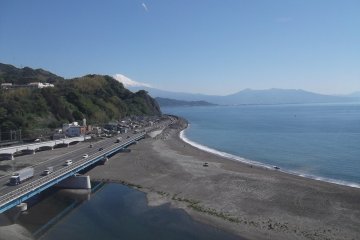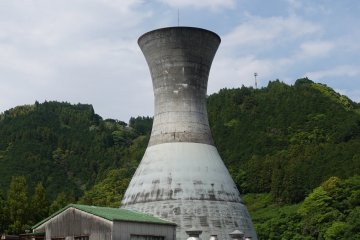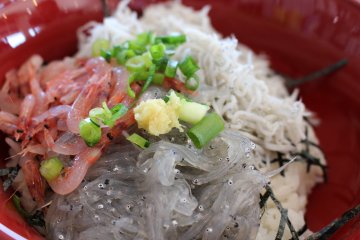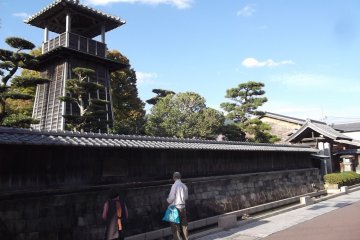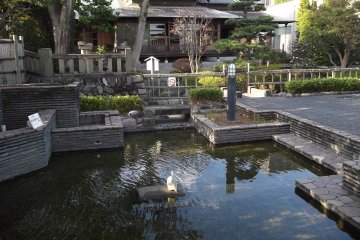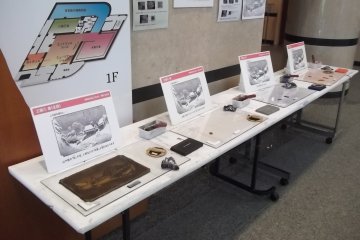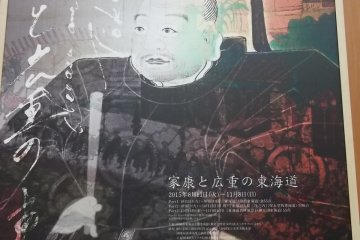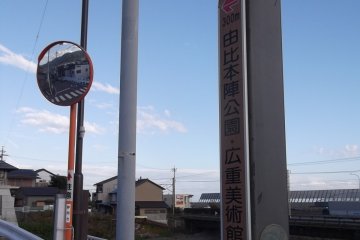Along with Hokusai, Hiroshige is regarded by Japanese art fans as an absolute master of ukiyo-e, traditional woodblock prints. Midway between Kambara and Yui stations near Shizuoka City, this museum is dedicated to Hiroshige and his contemporaries, with a collection of over 1400 prints, rotated throughout the year in themed exhibitions.
When I visited the special exhibition was "Ieyasu's Tokaido", based around shogun Ieyasu Tokugawa's upgrading and use of the Tokaido path between his capital in Edo (now called Tokyo) and the imperial capital of Kyoto. As well as prints, there were books and other documents on display; along with the comprehensive English explanations, these helped to provide some historical context for the exhibition.
The prints on display, by Hiroshige and other artists of the time, were beautifully preserved and brightly coloured; they showed mostly landscapes and procession scenes, with rich blue for the sea, bright pink for the frequent cherry-blossoms, a lively green for the dragon's head on the prow of a ship. One thing I learnt from the explanations was that printmakers would sometimes bend geographical reality somewhat - occasionally, rather a lot - in order to create a more attractive or harmonious image.
As well as the main exhibition, there are a couple of other rooms to visit. "The World of Ukiyo-e" has what looks like a timeline (it's only in Japanese), a display of printmaker's tools, and another, interesting display showing how a complete image is painstakingly built up one colour at a time. In another room you can see craft artefacts from Hiroshige's time - hina dolls, lacquerware, exquisite miniature furniture - which showed to me how the thoughtful curators are keen to provide a complete picture of the era.
Before you leave there are a couple of other distractions to detain you. The museum shop sells a selection of prints (of course), postcards, books, stickers and other gift items; and for ¥300 you can enjoy making some prints yourself, with paper, blocks and ink all provided, and I assume some guidance from the staff too.
The museum is located in Yui Honjin Park, a pleasant, restful space with a closely-manicured lawn, a traditional watchtower for spotting enemies, and a small carp pond. There's also a tiny shrine and a tea-room, the Miyuki-tei, where visitors can enjoy Japanese tea.




